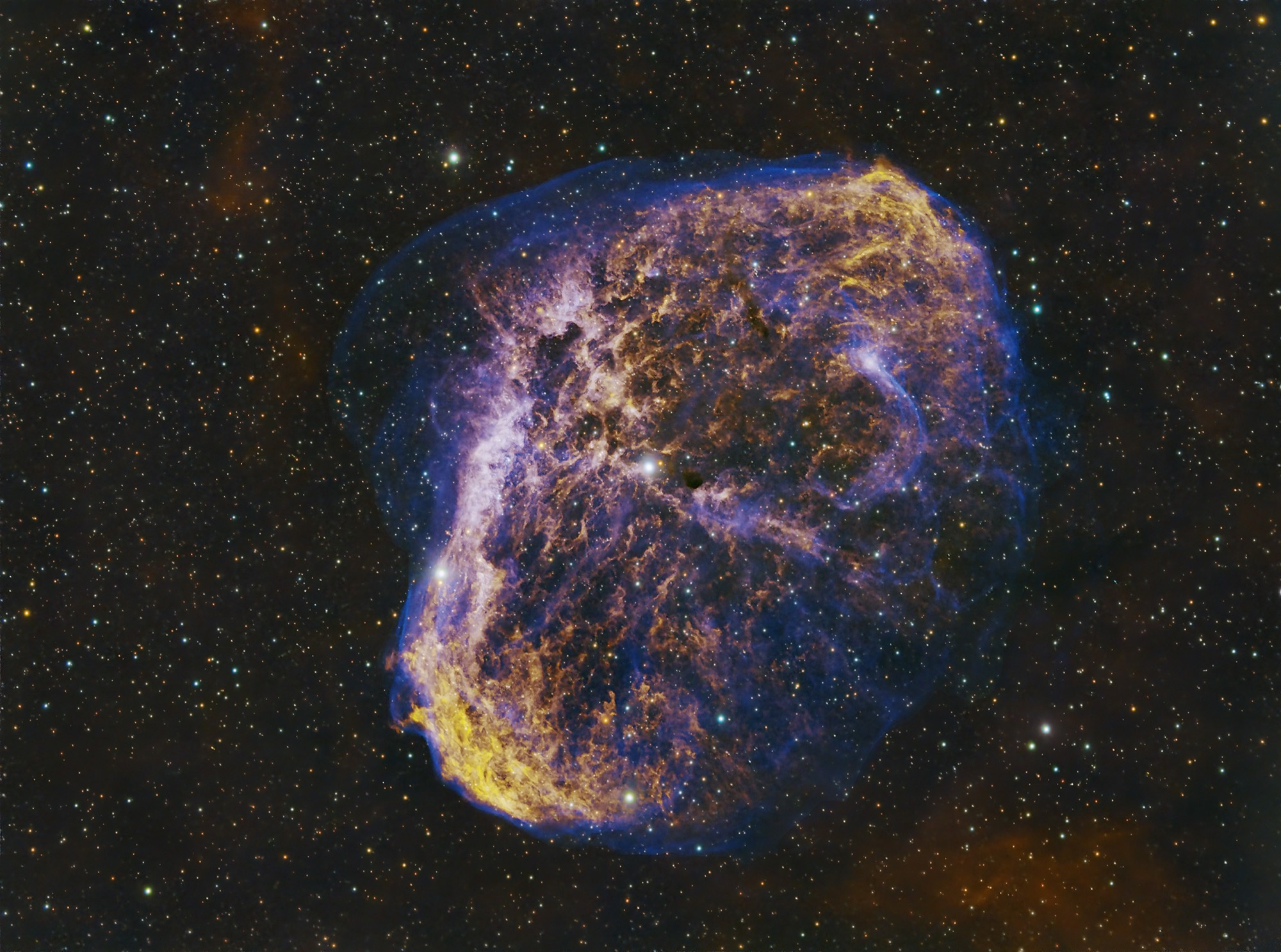NGC 6888, also known as the Crescent Nebula, is a cosmic bubble about 25 light-years across, blown by winds from its central, bright, massive star. This telescopic portrait uses ultra narrow band image data that isolates light from ionized hydrogen, doubly ionized oxygen and sulfur atoms in the wind-blown nebula. The oxygen atoms produce the blue color that seems to enshroud the folds and filaments. The deep red color in the background is hydrogen, and it also is what also causes much of the actual nebula to glow.
Visible within the nebula, NGC 6888's central star is classified as a Wolf-Rayet star (WR 136). The star is shedding its outer envelope in a strong stellar wind, ejecting the equivalent of our Sun's mass every 10,000 years. The nebula's complex structures are likely the result of this strong wind interacting with material ejected in an earlier phase. Burning fuel at a prodigious rate and near the end of its stellar life, this star should ultimately go out with a bang in a spectacular supernova explosion.
Found in the constellation Cygnus, NGC 6888 is about 5,000 light-years away.
This image is composed of 13 hours of exposures.
The nebula was created with H-Alpha, OIII and SII images (H-Alpha 69 x 3-minutes, OIII 96 x 3 minutes, SII 35 x 3-minutes). These images were combined into a color image by assigning H-Alpha to Red, SII to Green and OIII to Blue.
A natural color RGB image of the stars was created with 30 2-minute images, each through red, green and blue filters.
First I separated the stars from the RGB image and tossed the RGB nebula out. I then separated the stars from the HSO image and used those stars as a luminance image for the RGB stars to reduce the star bloat.
Optics: 1960mm focal length f/7 (Celestron C11 EdgeHD)
Camera: ASI1600MM Pro operating at -15C
Mount: iOptron CEM120
Focusing/Rotation: Moonlite Litecrawler
Guiding: Celestron OAG with a Lodestar X2 guide camera
Filters: Baader Narrow Band and LRGB.
Control: KStars 3.6.5 (MacOSX)
Post Processing: PixInsight & Photoshop
Imaged at my home observatory in central New Mexico (7,000')


